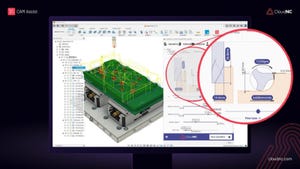Elastomer Goes With the (Waves') Flow
December 17, 2014
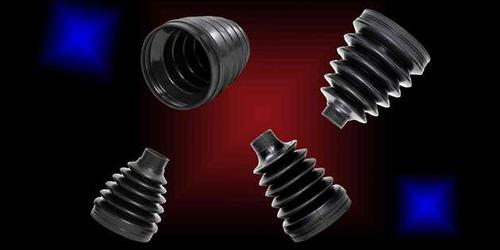
An elastomer long used in automotive applications has been used to improve the way marine mooring lines are connected to things like fish farms, oil & gas installations, buoys, and wave energy devices. The new bellow design of the Dynamic Tethers wave protection system acts like a shock absorber to protect these against impacts from rough seas.
The bellow's material is a combination of extruded DuPont Performance Polymers' Hytrel TPC-ET polyester thermoplastic elastomer with a tensile elastomer element made of a soft material that has low stiffness. DuPont says this combination gives the system a low force response, with elongations of up to 250% of the original length, while also enduring more than 3.5 million cycles per year of repeated, low-force events, as tested by Ireland-based Technology from Ideas (TFI). The company conducts proof-of-concept development on early-stage, technology-based ideas submitted by academic researchers.
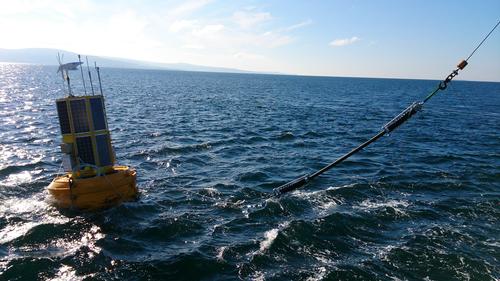
The Dynamic Tether system reduces peak loads as much as 70%, improving the durability of mooring lines. It's designed to move with the ocean's wave motions, instead of against them like conventional chain and rope mooring does. That conventional mooring works by pulling taut, which increases shock and makes it wear faster.
In contrast, the new design stays only slightly taut and responds easily when stretched to its limit. As the tether reaches its maximum extension, the energy-dampening bellow becomes engaged. As it compresses, the tether delivers a specific, targeted response. Besides reducing wear and tear, this functioning also improves the stability and positioning of tethered devices, and lowers cost. The bellow weighs 20 kg (44 lb), and measures 1.2 m (3.94 ft) long and 250 mm (9.84 in) in diameter.
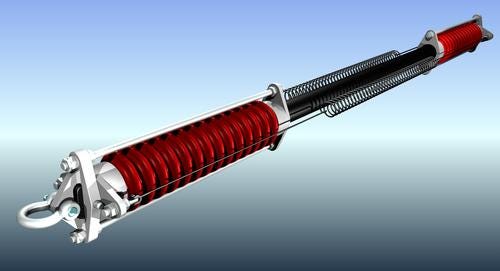
Hytrel was selected over competitive materials because of its elasticity and flex fatigue, as already demonstrated in automotive constant velocity joint (CVJ) boots. During their lifetime, CVJ boots withstand an average of 150,000 miles of shock, vibration, and thermal cycling, as well as exposure to chemicals like road salt. Hytrel has long been used in inboard and outboard CVJ boots, prop shaft boots and rear-wheel-drive boots.
During development, DuPont engineers used design knowledge from their experience with these automotive shock-absorbing bellows and TFI provided the load deflection curve for a quarter-scale model. The team created a Hytrel bellow with corrugations of different pitch. As compression progresses, these corrugations compress at different rates to produce greater stiffness. The team also used advanced finite element analysis (FEA) techniques to ensure the design met performance specifications. The tethers are being monitored at several European installations.
In contrast, the new design stays only slightly taut and responds easily when stretched to its limit. As the tether reaches its maximum extension, the energy-dampening bellow becomes engaged. As it compresses, the tether delivers a specific, targeted response. Besides reducing wear and tear, this functioning also improves the stability and positioning of tethered devices, and lowers cost. The bellow weighs 20 kg (44 lb), and measures 1.2 m (3.94 ft) long and 250 mm (9.84 in) in diameter.
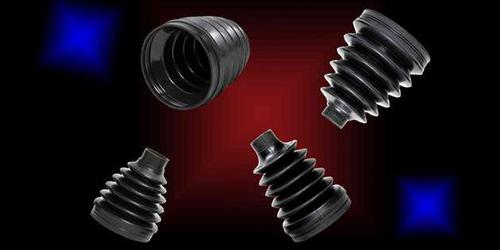
Hytrel was selected over competitive materials because of its elasticity and flex fatigue, as already demonstrated in automotive constant velocity joint (CVJ) boots. During their lifetime, CVJ boots withstand an average of 150,000 miles of shock, vibration, and thermal cycling, as well as exposure to chemicals like road salt. Hytrel has long been used in inboard and outboard CVJ boots, prop shaft boots and rear-wheel-drive boots.
During development, DuPont engineers used design knowledge from their experience with these automotive shock-absorbing bellows and TFI provided the load deflection curve for a quarter-scale model. The team created a Hytrel bellow with corrugations of different pitch. As compression progresses, these corrugations compress at different rates to produce greater stiffness. The team also used advanced finite element analysis (FEA) techniques to ensure the design met performance specifications. The tethers are being monitored at several European installations.
Related posts:
About the Author(s)
You May Also Like
.jpg?width=300&auto=webp&quality=80&disable=upscale)
